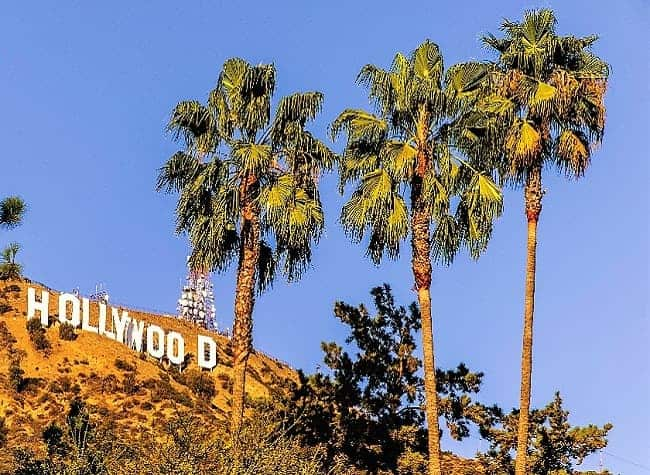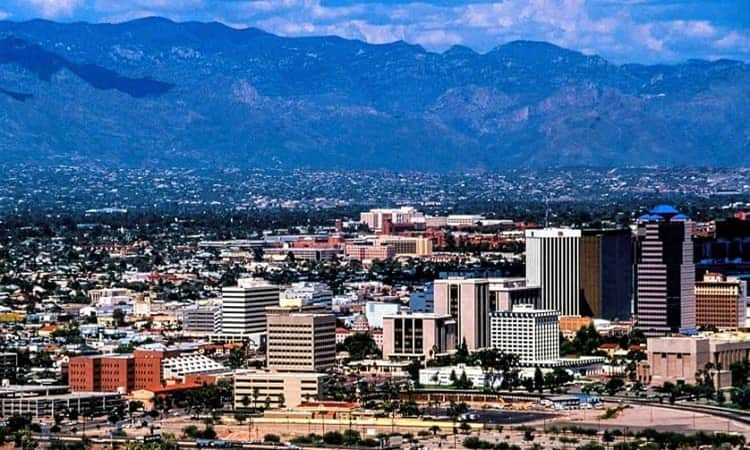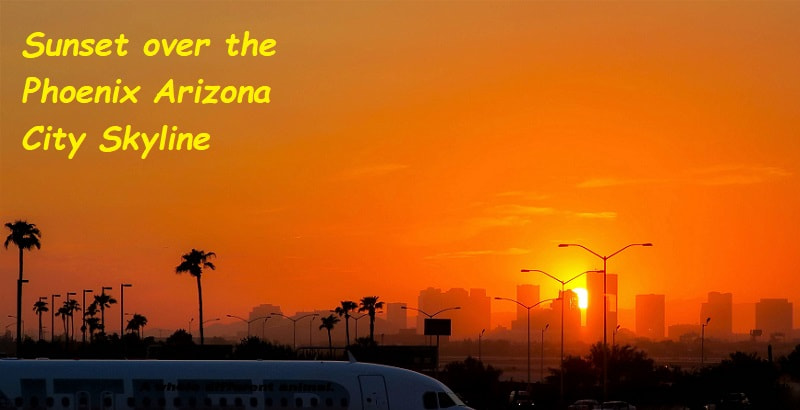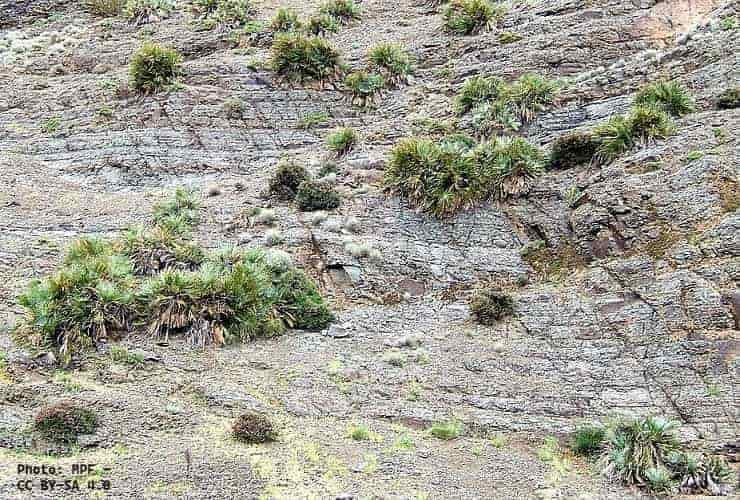- Home
- How Palms Grow
- Palms Loved & Hated
Are Palm Trees Bad for Environment?
The Pros and Cons for Urban Landscapes
Hmmm - so are palm trees bad for environmental health?
Here we are, a group of people who love palm trees! For their cool differences from most other plant species, their tropically calming beauty, their wide varieties, their lovely looks in our home landscapes! And many more reasons.
But as innocent (sort-of) as palms look, yes - there are those who don't like them at all! (Guess it may be Palms: Love 'em or Hate 'em!)
Those disliking palms have their reasons. Some are essentially valid. But even so, can we work around those rationales?
We know we love them - but why do some others not?
Feeling overwhelmed by so many palm trees?
You're not alone. We Understand your headaches! At Mission: Palm Trees you'll find clear answers to questions & Step-By-Step Guidance, from real people. With solutions to help. No puzzling shoptalk. No tiring research. So it's easy & fun for you.
Key Environmental Concerns for Palm Trees
Lack of Shade and Heat Island Effect
- Many palms that decorate city landscapes don't offer much shade to people and the streets below. Shade helps tamper down some of the urban heat island effects.
- See More About What Heat Islands Do>
Water Consumption
- Many non-native palm species are water-intensive. But not all. Those that do are certainly an important concern in arid climates.
Limited Biodiversity Support
- Some argue that compared to native trees, palms may provide less habitat and food for local wildlife.
- But that's also debatable. See Our FAQ Explaining Why.
Carbon Sequestration
- Carbon sequestration means taking up Carbon Dioxide (CO2). Green plants absorb CO2, and in exchange give off oxygen (O2) into the air.
- Very beneficial because as humans we need that oxygen - which is 21% of air gases. And we exhale CO2.
- Some sources say broadleaf trees like oaks, etc., are more effective than palms in carbon sequestration. That may be, it's all proportional, though. A good explanation of why that's the case comes from the National Association of Landscape Professionals.
Why is Miami Getting Rid of Palm Trees?
For Miami Florida, palm trees have produced a Love - Hate Relationship! Although palms are ubiquitous in this city, some feel palm trees are bad for the environment!

In 2007 Miami-Dade County, Florida, released a master plan for urban forestry.
With a listing of "Approved Trees." In Miami, most people envision palms all around. (We do, do you?) From yards, parks & along the beaches & streets.
One place you wouldn't find them was on the urban forestry Approval List! As they did believe about palm trees: bad for environment's quality.
 Vintage Look at Palm Treed Bayfront Park Beginning Flagler Street in Miami, FL
Vintage Look at Palm Treed Bayfront Park Beginning Flagler Street in Miami, FLProactively they reported their reasoning, anticipating complaints, or at least questions. Regarding NO palms on that list, they said:
"While palms are aesthetically pleasing and look ‘tropical,’ they do not provide the same environmental benefits, walkable streets, or lower ambient temperatures as hardwood shade trees."
Ref: Page 2 Mission Statement of Miami-Dade Street Tree Master Plan approved by the Board of County Commissioners: https://www.miamidade.gov/govaction/legistarfiles/Matters/Y2004/042206.pdf
And while we're at it, let's compare Miami Florida palm trees vs. California palm trees.
In California, Los Angeles Agreed - Palms Must Go!
Another city famed for palms all along its streets is in California.
Yes, that's Los Angeles. With Palms Along Many Streets. City forest management reasoned not having palms going forward: "they don't add anything. No huge canopy enhancing local shade & minimizing temperatures."
Admitting, though, palms are "aesthetically nice." Yet believing palms don't create healthier people environments. Rachel Malarich, City Forest Officer followed up with "Let’s focus on those that are going to be the biggest and heaviest hitters when it comes to habitat and cooling." And she didn't mean palms were the heavy hitters!
So, Los Angeles also didn't have them on their approved tree list. Even though the drought-tolerant California Fan Palm is Native (endemic) in the Southern California area, near oasis areas with streams or rivers.

Our Latest MPT Blog Post
-
Freeze Damaged Palm Trees - Help The Hurt!
Freeze damaged palm trees can stress you out. And stressful for your palm, too! We show you how to help it recover. And tips to avoid it.
Environmental Concern for Palms in Miami Florida -
Has Miami Updated Their Palm Stance?
Well, has Miami updated since? We wondered and came to the definitive conclusion of MAYBE!
You've got to perform a detailed search of the law code.
One thing we found was in Miami Dade County Codes in Chapter 24, Article IV, Division 2 (Tree Preservation), Section 24-49: Permits for tree removal and relocation, improperly issued permits, violation of permit conditions, exemptions from tree removal permits; mortgagee exemption from liability.
Under the (4)(f) requirements Washingtonia species are exempt from that part of the code.
We believe (we're not attorneys after all!) it intends that W. filifera, or W. robusta can be cut down without worry. Almost anywhere in the county. They're on the county's "Controlled Species" list, calling Washingtonias "invasive pests." And they're illegal to plant near "natural plant communities."
Well, we get it - Washingtonias are arid climate species. So are they the right palm in the right place? Growing in Miami County?
Did Los Angeles Update Their Palm Tree Stance?
Since the devastating fires around Los Angeles in January 2025, there have been many comments that palms are THE fire hazard there.
We don't agree. Even though, yes, palms can catch fire. An article in the January 2025 International Palm Society (IPS) pointed out why we disagree.
It mentioned how news coverage frequently spotlighted palms - especially the tall Mexican fan palms (Washingtonia robusta) - both as symbols of the region’s losses and as potential fire hazards. Reporters noted that dry, hanging fronds from these palms can act like firebrands, when high winds tear them off, spreading flames.
Some headlines even suggested “No More Palm Trees” as a wildfire solution. Reporters focused on this with TV broadcasts and in newspapers. Yet, as the IPS brought out, these news people have no "background in fire ecology, firefighting, or horticulture." Yet the fire department echoed warnings that burning palms can be hard to put out.
However, members of the IPS argue this implication is misleading. California’s natural landscape, from chaparral to pine forests, is no stranger to wildfires. Which are susceptible to fires, and would burn with or without palms. Especially with frequent drought.
Consider other common plants like junipers, nicknamed “gasoline plants” in Colorado, can pose equal or greater risks.
The IPS suggests that criticism of palms is often more symbolic than scientific. Palms may look dramatic when ablaze, but they're not uniquely responsible for California’s wildfire devastation.
Urban planning and overall vegetation management matter far more than singling out one type of tree. So they concluded "No need to hold palms responsible for the catastrophes people have just experienced in California."
References:
Davidovich, J. (2011, December 19). The problem with palm trees. City Lab/Culture. Bloomberg. Retrieved from bloomberg.com/news/articles/2011-12-19/the-problem-with-palm-trees
Vol. 13.02 · Feb. 2025 · The International Palm Society Newsletter | Editor: Jason Dewees
📌Palm Trees & Wildfires: Myth vs. Fact
That raises an important question many readers have asked: Are palm trees really fire hazards in Los Angeles, or is their role overstated?
Myth: Palm trees are major fire hazards in Los Angeles. Removing them will stop wildfires from spreading.
Fact: Palms are not uniquely responsible for wildfires.
- California’s chaparral and pine forests burn naturally, and other plants — such as junipers (nicknamed “gasoline plants”) and certain pines — often ignite faster and spread fire more intensely.
- While dry palm fronds can carry flames, wildfires would occur in Southern California even without palm trees.
You can research LA City Trees Here>
Can We Agree AND Disagree About Palm Trees?
We can understand the points they make - to a degree.
Once I even posted a Rebuttal To a Palm-Hater.
We understand needing good shade. Some studies show "shady" palms have an inverse relationship to their water need, compared to popular shade trees. Those like Maple or Oak on average proportionately use less water, while cooling their immediate area by 3-7oF/up to 4oC.
Cities tend to be "Heat Islands." Is that the palms' fault? No: Because cities are built with lots of ground-covering concrete & macadam. Buildings are closely set, not leaving much room for cooling green!
In this time of warming trends throughout the earth, maybe it's time to rethink what cities need, to discourage this Heat Island Effect.
If palm trees are bad for environment effects in cities, then let's form policies giving incentives for turning more areas into parks & botanic gardens with all varieties of shady trees.
 Tucson Arizona, Where We Live,
Tucson Arizona, Where We Live,Has Numerous Sandy Vacant Lots & Empty Businesses With Paved Parking
Phoenix Arizona is larger, an even worse Heat Island.
How about more green! Start getting creative with encouraging land donation, using any available infrastructure funding, applying for grants, etc.
 Phoenix - Setting Heat Records! More Lately Than in the Past
Phoenix - Setting Heat Records! More Lately Than in the PastOne Solution: Consider the Palm Landscaping
In cities, people use palms in their private landscapes.
Now it's even more important to Personally Design Palms with appropriate water use & shade provision. Helping to avoid people believing palm trees are bad for the environment. Quoting a plant nursery owner who specializes in rare plants - quite applicable. Flora Grubb says "...I adore palm trees. When used correctly, when designed into a garden with skill, palms do their jobs so well."
We love palms, and agree with using them skillfully & appropriately. So that palms aren't part of the heating-up problem. Like any plant, palm fronds make oxygen, helping air quality.
They pay their way! And not all palms guzzle water.
Reference for Agree & Not Agree section: Duque, Mario. (2015). Re: What are the pros and cons of palm trees use in urban areas? researchgate.net/post/What-are-the-pros-and-cons-of-palm-trees-use-in-urban-areas/557e923660614bf79f8b45af
SUGGESTION FOR SHADIER PALMS
What's best is looking for shorter palms - less than 60ft/80m. And also having a good, wide thick crown. Here's one example:
- Mediterranean Fan Palm Variety - Chameaerops humilis var. Argentea
- Adaptable, water-efficient & as a fan palm, has wider leaf blades for added shade.
- Multiple growing points grow bunching trunks. For shading areas.
- About 13+ feet tall, makes nice, bushy hedge-like planting to edge garden seating.
 Chamaerops humilis variation Argentea growing in Moroccan native habitat
Chamaerops humilis variation Argentea growing in Moroccan native habitatFAQ for - Palm Trees Bad for Environment
1) Are palm trees bad for the environment?
1) Are palm trees bad for the environment?
While palm trees are not inherently "bad," many common varieties are non-native, and have environmental drawbacks when used in urban landscaping, especially in arid regions.
- They provide little shade, which doesn't aid the "heat island" effect. Where urban areas are significantly warmer than surrounding rural areas.
- Many transplanted palms can be high water consumers.
- Some believe they should be removed Because They Help Create Wildfires.
- Some say they offer limited habitat for local wildlife compared to native, broad-canopied trees.
Yet, that viewpoint is controversial to some of us. Especially those who are palm aficionados. See why we (along with others) don't agree palms are the villains in FAQ 4.
2) Do palm trees provide good shade?
2) Do palm trees provide good shade?
No, not as a rule. Many palm trees are poor at providing shade. Some have small canopies of fronds which can't provide sun protection.
But there are exceptions to the rule. However many of those exceptions, such as many Arenga species, require more water than dry areas should supply. Better that cities like Los Angeles consider palms that have full crowns (when getting the Proper Palm Nutrition) while being drought tolerant.
Patt Morrison of the Los Angeles Times amusingly wrote, they "give back barely enough leafiness to shade a Hula-Hoop" (Los Angeles Times, August 10, 2025). Which really, she is only thinking of those tall Washingtonia robusta palms.
This lack of shade is a major reason why cities like Los Angeles are opting to replace them with broadleaf trees that can help cool urban environments better.
3) Are palm trees high-water-use plants?
3) Are palm trees high-water-use plants?
There's no black or white answer. It depends on the species, the climate, and the age of the palm.
While some palm species are drought-tolerant, many popular varieties used for landscaping, such as the Canary Island date palm, tolerate less water when established.
Cities in arid regions are increasingly replacing some with more drought-tolerant species to conserve water (The Guardian, September 29, 2017).
4) Do palm trees support local wildlife?
4) Do palm trees support local wildlife?
Some say palm trees generally provide less support for local wildlife than native trees.
While some birds may nest in the fronds, and some insects may feed on the nectar, birds and some mammals eat the fruit - those objecting say they do not support the same diversity of life as a native oak or maple tree, for example.
Yet, it can depend on the geographical setting. Native plants in general are better for supporting needs of local wildlife. But I have found there are no valid studies that confirmed a specific comparison to native plants as a whole, including palm trees. Have you?
5) Why are cities like Los Angeles replacing their palm trees?
5) Why are cities like Los Angeles replacing their palm trees?
Cities Like Los Angeles are Replacing their aging and dying palm trees with more climate-appropriate shade trees for several reasons.
As mentioned in a Yale Environment 360 article, the primary goals are to combat the urban heat island effect by increasing shade cover and to conserve water by planting more drought-tolerant species (Yale E360, October 2, 2017). See More About Heat Island Effects.
Additionally, many of the city's iconic palm trees are reaching the end of their natural lifespan and are succumbing to disease and pests.





